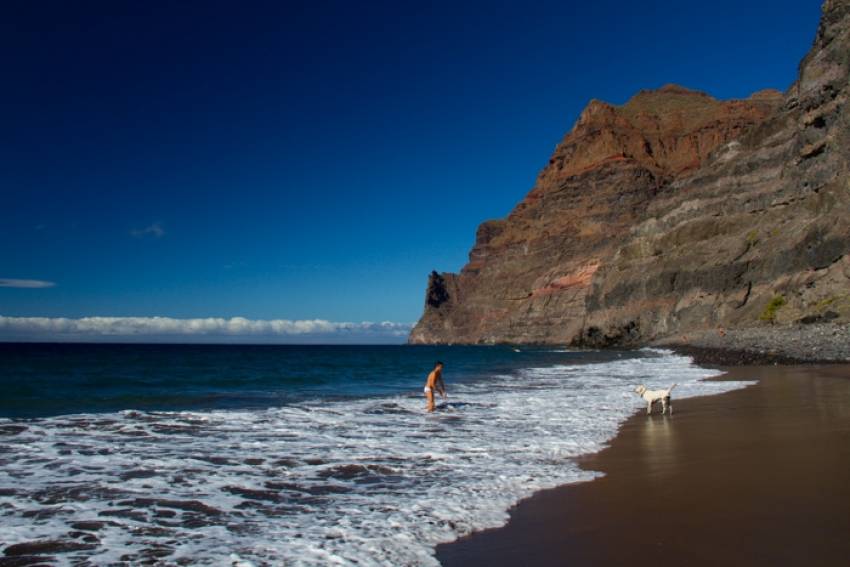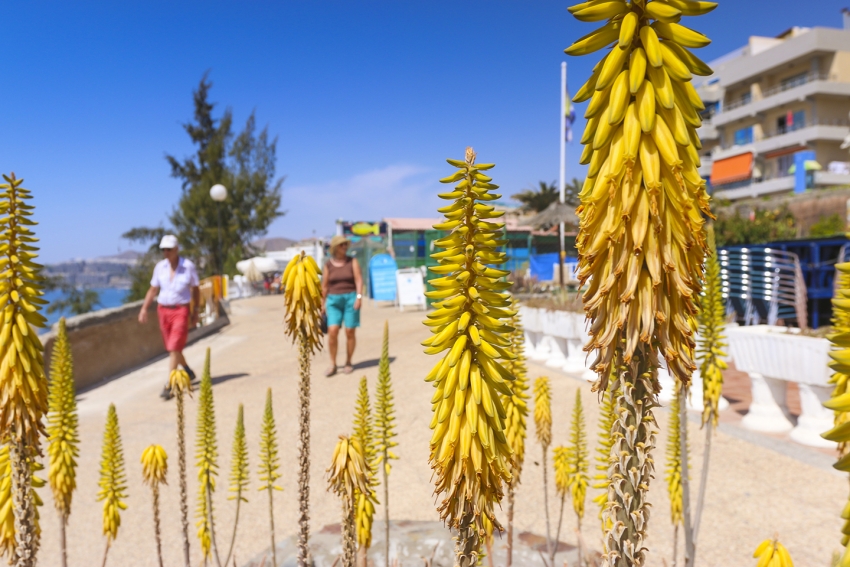Far more people search for Güi Güi Beach (pronounced Wee Wee) on Google than ever go there. In fact, if all the people who say they have been actually had, then it would be crowded most weekends. In reality Güi Güi is so remote that it is almost always deserted. Years back there was a permanent hippy colony that grew its own weed and wittered on about "The Man". They have disappeared but there is still a resident hermit.
Two Güi Güi Beaches?
There are actually two beaches: Güi Güi Grande is the first one you get to and is only little (about 350 metres long). It's big name comes from the size of the barranco rather than the beach. Güi Güii Chico is just south of its little neighbour and is about 650 metres long. You reach it by walking along the rocks but be careful at high tide or when the sea is rough as it can inaccessible: You're a long way from a lifeguard.
Nudists, hippy types and nature lovers make the five kilometre trek from Tasartico down to the beach for a few days of naked relaxation. It's a tough hike but easy to follow: Uphill at first and then down into the steep barranco. The drop-offs are spectacular and vertigo isn't an option. The walk takes about two and a half hours one-way. Take plenty of water as hikers have died of dehydration in the area.
As for facilities, the unofficial camp site behind Güi Güi has a small shop but don't count on it being open out of peak periods. When open it sells all the important stuff, like bread, cigarettes, rum and water. The stream that is quoted in many articles is a bit slimy but is clean enough for frogs to live in. Most hard-core campers carry their supplies in.
The beaches are in the Reserva Especial Natural de Güi-Güi and are therefore protected by law. Technically you aren't allowed to camp and until recently nobody cared if you did. However, there are rumours that clip-board man now appears during local holidays and hands out fines. Avoid Easter, Christmas and August and the chances of being pestered are minimal.
Sadly, the Water Taxi service from Puerto de las Nieves didn't last. The idea was good but fuel costs were too high to make it profitable. Nowadays you either walk in or to hop on a day trip from Puerto Base in Puerto Rico resort. They moor up offshore for an hour or so and you can swim ashore and pretend that you made it under your own steam. The genuine Güi Güi crowd may well tut and mutter about "turistas" spoiling their nudist paradise. Be polite and strip off!
You can also get to Güi Güi by heading to La Aldea de San Nicolás by bus and asking around in the port for a lift. If the weather is good a friendly fisherman may offer to take you but this depends on whether the tuna are in. Be aware that if the sea picks up while you are at Güi Güi then a small boat won't be able to pick you up again and you will have to hike out. There is a path from Güi Güi to La Aldea but it takes about 5 hours and is steep.
Güi Güi is more about the journey than the sand. It gets some of the best sunsets in Gran Canaria and the night skies are spectacular. Güi Güi and Gran Canaria's other wild beaches are the perfect place to channel your inner hippy.















